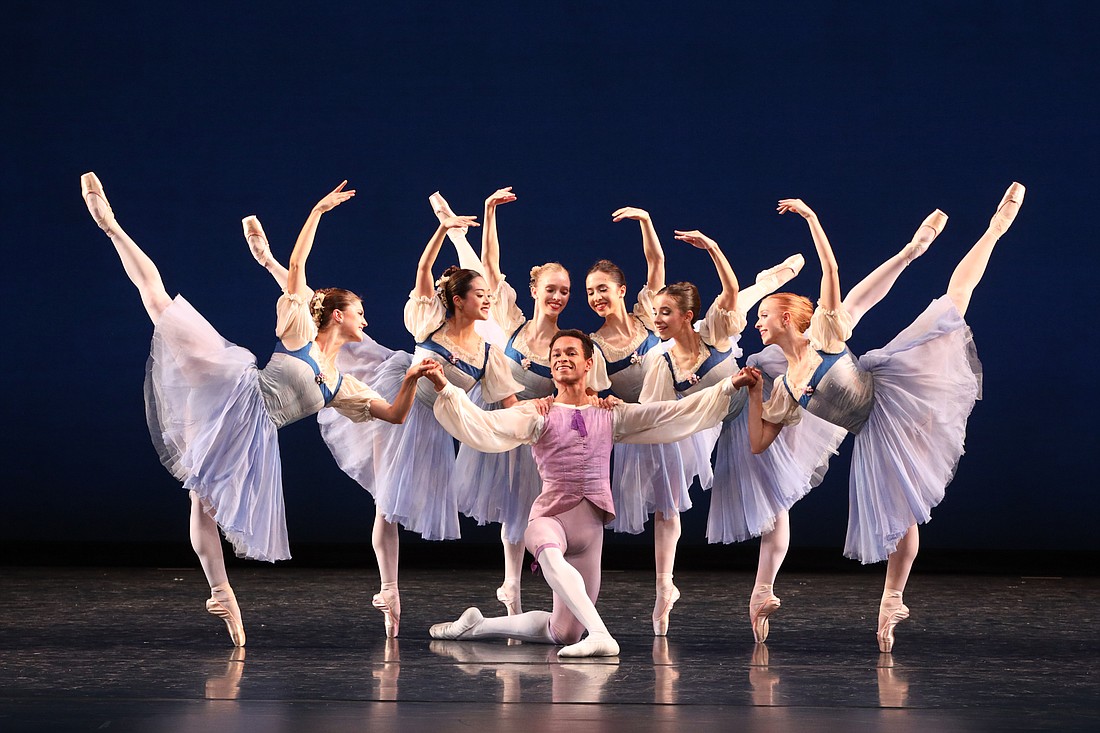- April 9, 2025
-
-
Loading

Loading

The Sarasota Ballet’s Digital Program 5, released this past weekend, featured ballets from past and present choreographers. George Balanchine’s "Donizetti Variations" and Ricardo Graziano’s "Amorosa" differ largely in style but are similar in that they are both choreographic sensations.
"Donizetti Variations," first performed by the New York City Ballet in 1960, is a plotless ballet set to music by Gaetano Donizetti. The choreography reflects many aspects of the August Bournonville style with a Balanchine flare. Principal couple Katelyn May and Yuri Marques danced with attack and precision during the pas de deux and solo sections. May’s musicality was spot on during her variation, and Marques nailed his turning sequences.
The ensemble, consisting of six women and three men, also brought attack and infectious energy. The group joyfully executed the challenging and quick footwork all the while creating beautiful symmetry on the stage. Although the ballet has no narrative, there was a moment of humor as one of the ensemble woman, Kelly Williams, tries to steal the show but then ends up limping shamefully back into place.
One of the benefits of the digital programming has been the behind-the-scenes rehearsals, interviews with repetiteurs and conversations with the dancers.
Program 5 includes an interview with Director Iain Webb and resident choreographer Ricardo Graziano. They discuss how Graziano (with a nudge from Webb) began his choreographic career and his inspiration for "Amorosa."
The curtain opens on "Amorosa" with one woman, Danielle Brown, wearing a red strapless gown and holding a rose. Her gestures to the Vivialdi music immediately set the romantic tone Graziano envisioned.
Graziano has established a signature style that is magnified during "Amorosa." The dancer's movements are expansive and free, almost eating up the space.
Couples began to enter and exit the stage — the men showing strength, the women sensual — moving beautifully together. The entire cast danced with passion and grace with Ivan Spitale standing out among the men and Brown among the woman. The final pas de deux with Brown and Ricardo Rhodes, ending with rose petals falling to the floor, was unforgettable.
Webb mentioned in the interview with Graziano that an important part of The Sarasota Ballet is preserving choreography of the past and giving opportunities to new choreographers. These opportunities for new choreography will help shape the (very bright) future of the company and the entire art form.